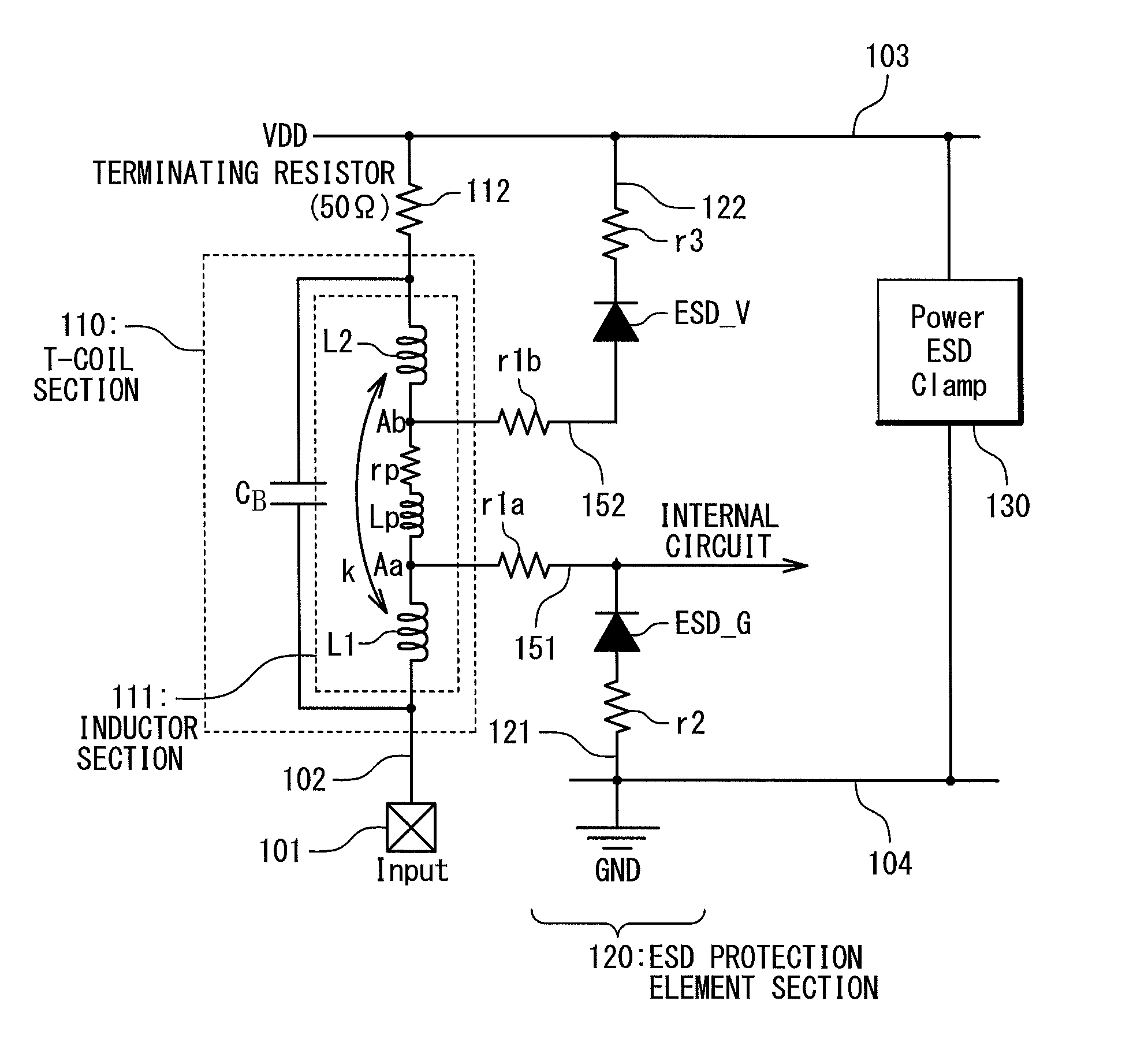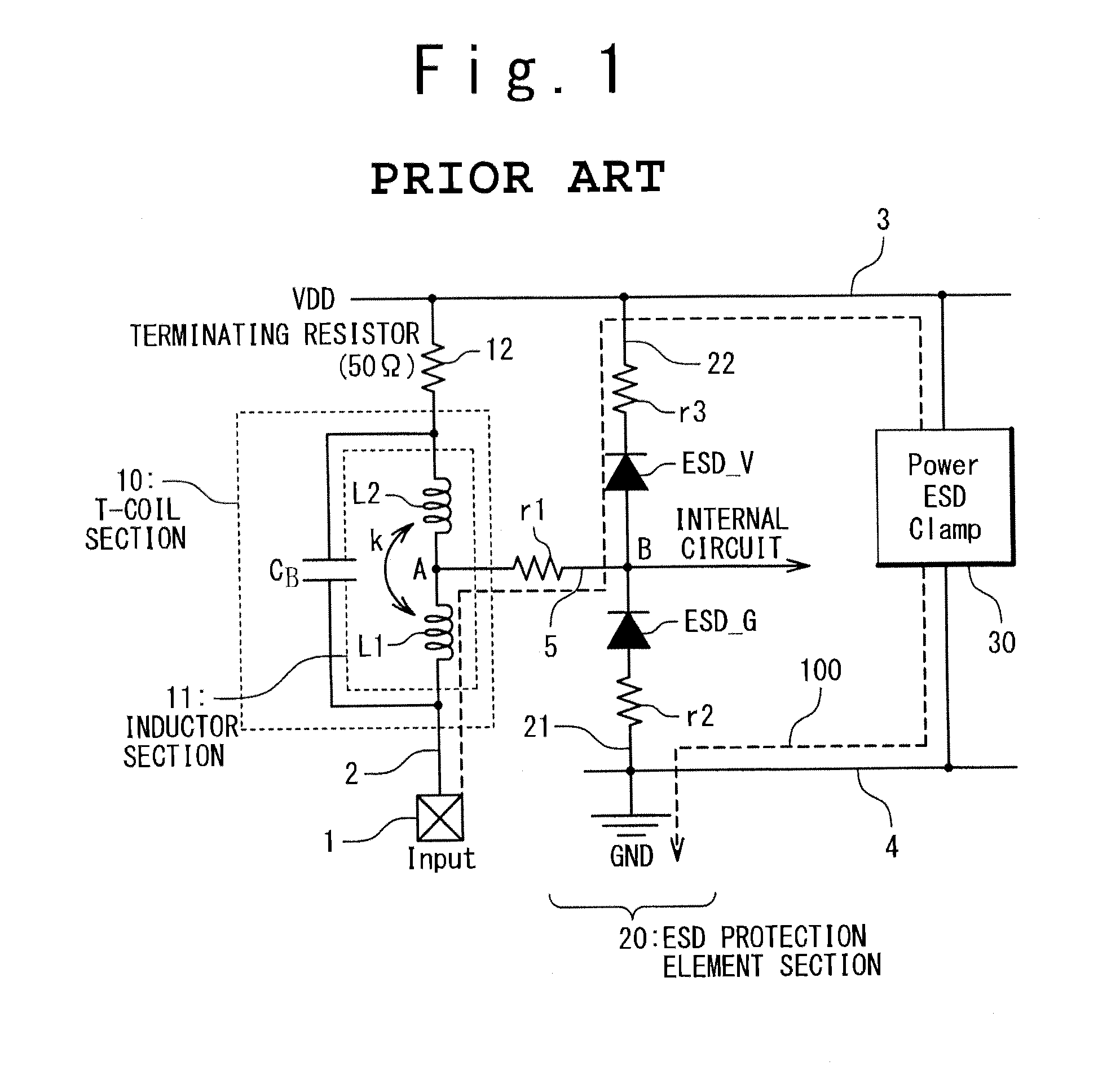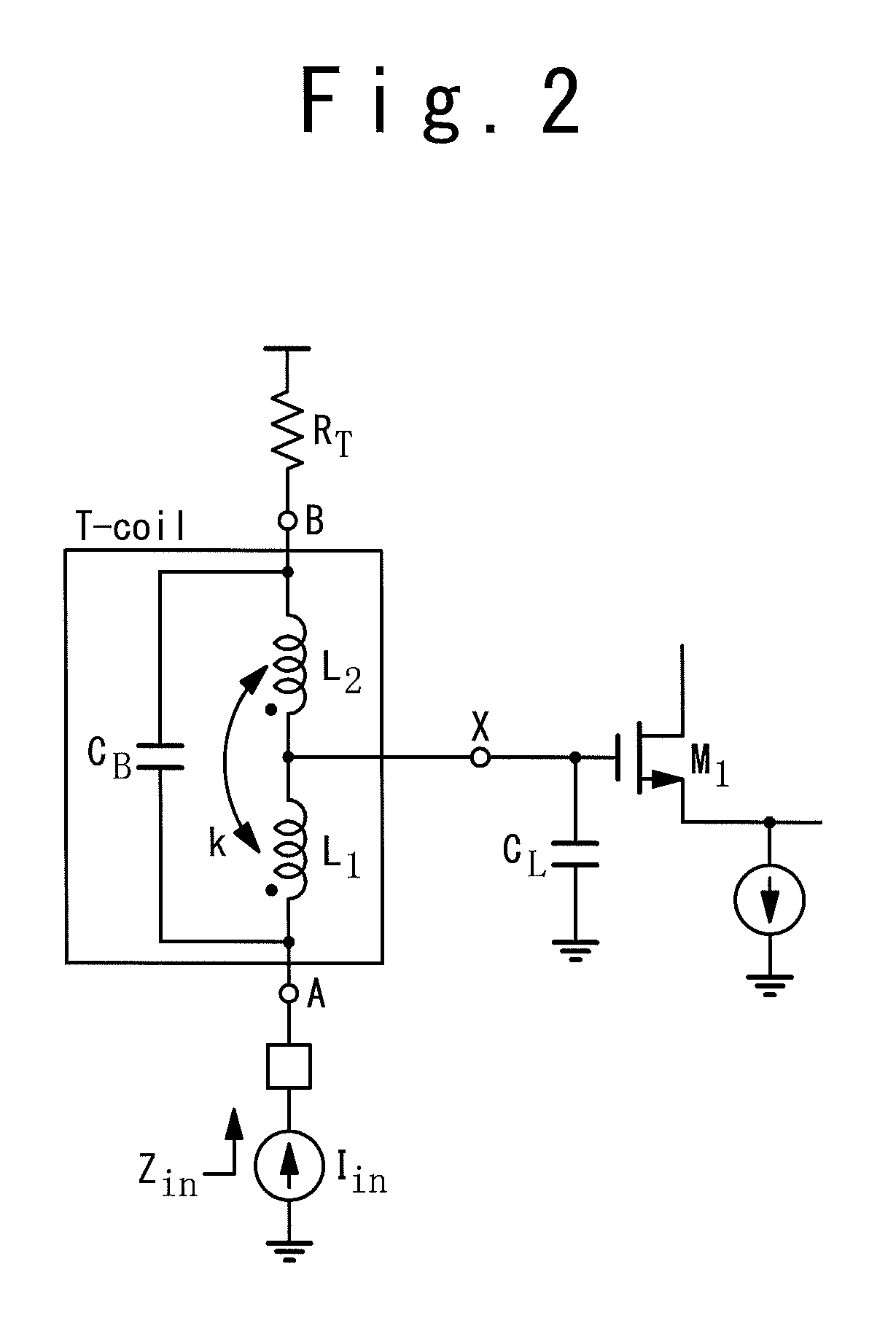Semiconductor device
a technology of semiconductor devices and dielectric devices, applied in semiconductor devices, semiconductor/solid-state device details, electrical apparatus, etc., can solve problems such as destroying the cmos internal circuit, affecting the operation of the device, so as to reduce the interconnection resistance, reduce the interconnection length of the tap interconnection, and increase the permissible value of the current density
- Summary
- Abstract
- Description
- Claims
- Application Information
AI Technical Summary
Benefits of technology
Problems solved by technology
Method used
Image
Examples
first embodiment
[0045](First Embodiment)
[0046]A semiconductor device according to a first embodiment of the present invention will be described below. FIG. 3 is a circuit diagram showing an interface circuit as the semiconductor device provided with a T-coil and an ESD protection element according to the present embodiment.
[0047]The interface circuit shown in FIG. 3 has a signal input pad 101, a signal line 102, a power supply line 103, a ground line 104, tap interconnections 151 and 152, a T-coil section 110, a terminating resistor 112, an ESD protection element section 120 and a power ESD clamp circuit 130. The power supply line 103 supplies a power supply potential VDD. The ground line 104 supplies a ground potential GND.
[0048]The signal input pad 101 is used for inputting an external signal. The signal line 102 connected to the signal input pad 101 transmits the input signal. The T-coil section 110 has an inductor section 111 and a capacitor CB. The inductor section 111 has an inductor L1 and a...
second embodiment
[0075](Second Embodiment)
[0076]Next, a semiconductor device according to a second embodiment of the present invention will be described. In the second embodiment, a structure in which the semiconductor device described in the first embodiment is placed repeatedly will be described. In this case, the interconnection 121 connected to the GND interconnection 104 and the interconnection 122 connected to the VDD interconnection 103 can be shared by adjacent semiconductor devices. The permissible value of the current density can be increased by enlarging the interconnect widths of the interconnections 121 and 122.
[0077]FIG. 8 is a cross-sectional view showing a structure of the semiconductor device according to the present embodiment. FIGS. 9 and 10 are plan views of the semiconductor device according to the present embodiment. FIG. 9 is a plan view showing a layout of the bottom layer on the substrate shown in FIG. 8. FIG. 10 is a plan view showing a layout of the inductor section 111 in...
PUM
 Login to View More
Login to View More Abstract
Description
Claims
Application Information
 Login to View More
Login to View More - R&D
- Intellectual Property
- Life Sciences
- Materials
- Tech Scout
- Unparalleled Data Quality
- Higher Quality Content
- 60% Fewer Hallucinations
Browse by: Latest US Patents, China's latest patents, Technical Efficacy Thesaurus, Application Domain, Technology Topic, Popular Technical Reports.
© 2025 PatSnap. All rights reserved.Legal|Privacy policy|Modern Slavery Act Transparency Statement|Sitemap|About US| Contact US: help@patsnap.com



